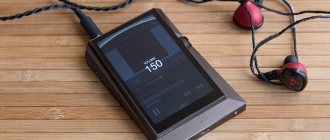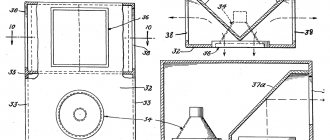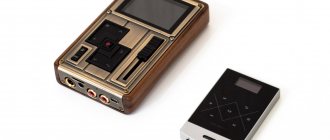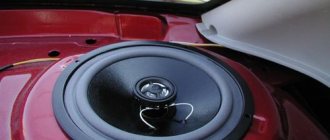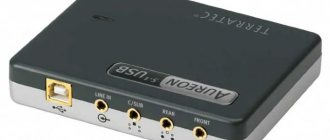Vive le Roi?*
Probably many audiophiles still remember those prosperous times when the Kingdom of portable Hi-End was reigned supreme by the good old Colorfly IV and he had no worthy opponents in the struggle for power, and those times were times of peace and tranquility. However, the old man began to grow decrepit, and was unable to leave worthy offspring, and the era of Timelessness began in the Kingdom. The Throne was successively claimed by representatives of various Families, from the eminent house of Sony to the nouveau riche - Hifiman, iBasso and other highly respected player clans. And no one could seriously declare their claims to the Throne. But suddenly the wind blew from the East and the inhabitants of the Kingdom saw
The history of the Korean brand of portable Hi-End Astell&Kern owes its appearance to the IT industry giant Samsung. In 1999, several Samsung engineers left the company to found their own company to produce mp3 players, which were becoming increasingly popular at that time. This is how iRiver was born. The first iPod was almost two years away. iRiver quickly established itself as a manufacturer of inexpensive and fairly high-quality players, and support for MP3 and OGG formats only added to their popularity. However, life does not stand still, and the young Korean company was unable to compete on equal terms with such monsters as Apple and Sony. They began to quietly forget about iRiver... Realizing the futility of such a struggle, they began to look for a new free niche in iRiver. And such a niche was found... In fact, it was a huge risk - to enter the segment of ultra-expensive portable Hi-End, without decades of engineering traditions and a glorious name, creating a completely new, unknown brand, asking the consumer to pay money, which he had never paid before... Crazy! But the madness worked...
The excitement with which the “firstborn” of Astell&Kern, the AK100, was received inspires Koreans to create new, increasingly expensive and technically complex devices. The second version of the AK 100 and AK120 were received with a bang and the AK 240, a “heavyweight”, costing $2,500, was born, at the same time Astell&Kern began collaborating with Jerry Harvey in the production of a joint line of headphones based specifically on the players of the Korean company series “Sirens”, which Jerry had previously released exclusively in a “custom” version. It was already space, and it seemed that there was simply nowhere to move further. But, apparently, the philosophy of life of these Korean guys is a constant search for limits... both their own and those of the people for whom they create their product... That is why today I am holding in my hands the Astell&Kern AK 380 paired with the top “Harviv” Leila. Seven and a half thousand dollars for a portable bundle... Are you serious??? Almost half a million rubles for “sound in your pocket” - no one has ever dared to do such “impudence”... well, let's watch, or rather listen!
King's Dress
Elegance and innovation - perhaps these epithets can describe the appearance of the AK380. The design of the case is extremely unusual, it contains notes of postmodernism, a departure from the rectangular shape, and rapid angular outlines that evoke memories of the masterpieces of Pablo Picasso. A kind of challenge to our classic idea of what an expensive thing should look like. The shape of the body is completed by finishing materials - carbon fiber and aircraft-grade aluminum. In general, a Hymn to free thinking, the breaking of stereotypes, a vivid protest against conservatism.
The ergonomics of the device does not cause any complaints. There are a minimum of buttons on the body, a power button on top and two headphone outputs - a regular 3.5mm jack and a balanced 2.5mm jack, which has already become a signature feature of Astell&Kern products, on the left there are two buttons for switching between tracks and a Play/Pause button, and with on the right side there is a mechanical volume wheel with claims to discreteness. The carbon back is equipped with a height-adjustable screw-stand, which is designed to protect the surface of the case from scratches. The only thing I was missing on the case was a “lock” that locks the player and prevents accidental turning off or switching tracks. However, the power button responsible for this copes with varying degrees of success.
The player's user interface is designed in soothing colors, the menu is very laconic, logically laid out in a very pleasant and intuitive way. Sorting songs by genre, artist, album, folder, or simply the ability to create your own playlist. Nothing unnecessary that can distract from listening to music. When you click on the top of the screen, a menu appears for technical settings, switching the player to DAC mode, access to a Wi-Fi connection and an equalizer.
The developers approached the issue of solving the main task of the device - high-quality sound reproduction - without compromise. Separate AK4490 DACs for each channel, capable of processing files with a sampling frequency of up to 384 kHz with a sound depth of 32 bits, support for DSD 64 and DSD 128 formats, a 20-band equalizer controlled by a separate processor with a “step” of 0.1 dB - the filling, which is not always found even in good stationary Hi-Fi systems.
This is the result of the first external inspection of the AK 380 and study of its technical characteristics. Let's move on, however, to his companion...
Characteristics of Astell&Kern Angie II
| Headphone type | Reinforcement |
| Impedance | 17 ohm |
| Sensitivity | 117 dB/mW |
| Frequency range | 10 - 23000 Hz |
| Number of emitters | 8 |
| Isolation from external noise | 26 dB |
| Headphone jack | Minijack 3.5 mm |
| Connection | Wired |
Using the remote control on the cable and a screwdriver, you can adjust the variable bass of the headphones - adjust the low-frequency drivers in the range from 10 Hz to 100 Hz, changing the amount of bass from 0 to +15 dB.
Queen Layla
Before we start talking about these headphones, let's give the floor to the Parent... Here's what Jeria himself says about his brainchild:
Well, let's check...
The first thing you notice when you take Layla out of the box is the size of the model. They are downright confusing from the start. The housing, the size of an overripe cherry berry, and the heavy double braided wire raise doubts that this entire structure will fit into the ears at all. This is the “fee” for 12 armature drivers coupled with a 4-way crossover for each channel. However, the ergonomics of the cases and the behind-the-ear fit quickly dispelled all my doubts. The headphones fit in your ears and are comfortable!
The headphones themselves also come with a solid metal case, 6 pairs of ear pads, a replaceable balanced cable, and... a screwdriver. The fact is that Layla has a special remote control on the cable with two regulators, which are turned using this same screwdriver and are responsible for fine mechanical tuning of the sound of low frequencies to suit the hearing of a particular user! The solution is very unusual, giving off a certain “studio feel”.
Equipment
The stylish black box hides the AK380 itself, which at first you carefully take with four fingers, despite the fact that it is conveniently removed from the box using a “tab” - here we say hello to Apple and its MacBook. In general, the “open the box and immediately see the device” approach was first tested by premium brands, then the rest caught up, which previously hid the device itself with a lot of cardboard, warranty cards and other waste paper.
The side lines of the box accurately repeat the geometry of the AK380 body, which makes it quite futuristic. Inside are two more black boxes - the larger one contains the necessary documentation, a set of films and a stylish brown case made of hand-made genuine leather. The small box contains a place for a micro-USB cable for charging and transferring files.
The package is built on the principle of “nothing superfluous”. Everything is in its place, just a paradise for a perfectionist. I don’t even want to throw away such a box, but we won’t sing its praises for a long time - we’d better look at the player itself.
Now about the sound
In the beginning there was the Word and the Word was... hmm, within the framework of corporate ethics and rules, I cannot print this word here. My first impression of the sound of Layla is that these are not in-ear headphones... Because in-ear headphones do not provide such sound. In terms of its density and acoustic tangibility, it is much closer to full-size high-end models. The stage is constructed amazingly, the localization of instruments in space is at the highest level, the dynamic range, especially in orchestral parts, is full and does not cause a feeling of being cut off.
Low... The bass is fast, extremely clearly defined, not a hint of a veil. At the same time, the infra-low register can be heard well, adding the necessary depth to the compositions, the bass passages are very clear, well readable, without unnecessary colors, which some manufacturers are so famous for in pursuit of youth fashion. Listen to Call of Ktulhu with S&M Metallica, and if you watched the concert on video, you will clearly remember the first appearance of Jason Newsted on stage, or rather, first the appearance of the first notes of his bass guitar, and then, after them, himself...
The mids are smooth, calm... This is the Kingdom of rhythm and voice. The guitar parts of Keith Richards dancing over New York on a fictional gargoyle and the vocals... the mesmerizing vocals of Mick Jagger - in the “Anybody seen my baby” that I adore, everything is in its place, everything sounds excellent, the overtones given off by the bunch fill the music with exactly that enchanting trail and atmosphere, behind which I love her so much...
Highs... With all the advantages of the combination when playing high frequencies, and the fullness of higher harmonics is really impressive, here certain problems arise with the sound. However, this is not the fault of the tract, Layla perfectly compensates for the tonal brightness of the AK380, but even it is not able to cope with the sibilance that comes out on Mylene Farmer's vocals. I consider this to be a consequence of the sound engineer’s unsuccessful work with the very unique timbre of Mylene’s voice during mixing, and I will attribute this moment to a manifestation of “studio honesty,” which the combination, without a doubt, is not devoid of.
In general, correcting shortcomings in sound editing is exactly what awaits you when listening to tracks with high-pitched female vocals. And here, finally, there is an opportunity to use the powerful AK380 equalizer. 20 frequency bands and adjustment in 0.1 dB steps - there is room to roam around and play the exciting game “find your ideal sound” for hours. Otherwise, the player and headphones cope “excellently” with high-pitched sounds, and even Kirk Hammett’s hysterical guitar cuts, which were quite “problematic” for my hearing, this time went smoothly and evenly, without excessive brightness, which usually quickly tires.
In general, the longer you listen to this combination, the more you understand that what you hear goes beyond the concepts of “musicality” and “beautiful sound.” AK380 and Layla bring us very close to the line where music ends and audio material begins. The ears, together with the head, begin to work differently. The detail of the reproduction is such that, inevitably, you stop just listening to the music and begin to analyze the playing of the musicians, the work of the sound engineer. It turned out to be very difficult for me personally to get out of this state. All this looks very “thin”, one more step and you can fall into the analytics of working with sound... but this does not happen. The bundle remains primarily a device for listening to music, although it comes very close to where studio sound begins. But, still, be prepared for the fact that your favorite compositions will end up as if on a surgical table and will be dissected with all medical pedantry. So, having become the owner of an AK380 and Layla, you willy-nilly have to spend many, many hours looking for decent quality tracks.
Finally, summarizing all my feelings, I want to express a few of my thoughts about why debates about the advisability of purchasing such Hi-End devices are absolutely not constructive. I very often hear the voice of critics of Hi-End equipment, that this kind of thing is absolutely useless, that audiophilia is akin to drug addiction, that people start listening not to music, but to wires, DACs and other fitting emitters. That for such people, analyzing the frequency response graph gives more pleasure than the listening process itself. What, we, Hi-End sellers, have become completely insolent and are selling a player with headphones for the price of an apartment in some small city in Russia, that we are trying to sell people something they don’t need...
To all this, I can only answer that I urge everyone not to judge only by themselves, but to admit that there are people whose hearing is much sharper than ours, who perceive music in general and good quality music in particular on a completely different level. For whom a clear understanding of the nature of the sound of a particular instrument is often much more important than the overall drive of the composition. They no longer approach music from a “like or dislike” standpoint; they scale this very music into smaller components and they enjoy analyzing these components separately. This absolutely does not mean that these people are better or worse than everyone else, they are simply Different... it is for them that products such as AK 380 and Layla are created. And even if 99% of people do not see any point in spending a lot of money on this, there is always that same 1% who care about it... for whom this is life. Let's just respect these people's choices.
* French - Long live the king
So what does that sound like?
Thanks to the built-in DAC, the player produces excellent sound quality. The 11mm driver is responsible for a wide frequency range, which allows you to use headphones without crossovers. In other words, it feels like listening to a multi-driver armature. You can hear it even from an iPhone.
The resulting music is excellent. The manufacturer previously positioned the “plugs” as a device for listening to professional and high-quality sound.
In this combination, the headphones produce an assertive, natural and precise sound. The sound is smooth, with precise range separation and a wide stage. They produce clear, powerful and not overloaded bass, harmonizing among the mids and highs. But enough of the lyrics, they really HIT, but so evenly that there is no unpleasant pain or bleeding in the brain. On the contrary, the ear vibrates pleasantly.
Thanks to its design, the AK T8iE Mk II produces very dynamic mids and ringing highs. They do an excellent job with vocals and instrumentals, and allow you to feel the full depth of the composition. You can hear everything .
And the effect of presence is brought to an incredible level. Everything that is recorded as if in the center plays somewhere in the very middle of the head, and what should sound at the edges feels transported even further than the ears, into a distant space.
It is noteworthy that to achieve a sound pressure of 117 dB, the AK T8iE Mk II headphones require no more than 10 mW of input power. This is very cool, because the range of tablets and smartphones used in conjunction with these headphones is growing.
All products made from this material
Astell&Kern PSF11 Layla - in-ear headphones (Black)
Product removed from sale Article: 345894
Item in your cart
Astell&Kern AK380 256Gb - digital player (Meteoric Titan)
Product removed from sale Article: 343463
Item in your cart
Astell&Kern AK320 128Gb - digital player (Gunmetal)
Product removed from sale Article: 488999
Item in your cart
Bundle Astell&Kern AK320 128Gb (Gunmetal) + Audio-Technica ATH-MSR7 (Black)
Product removed from sale Article: 611980
Item in your cart
